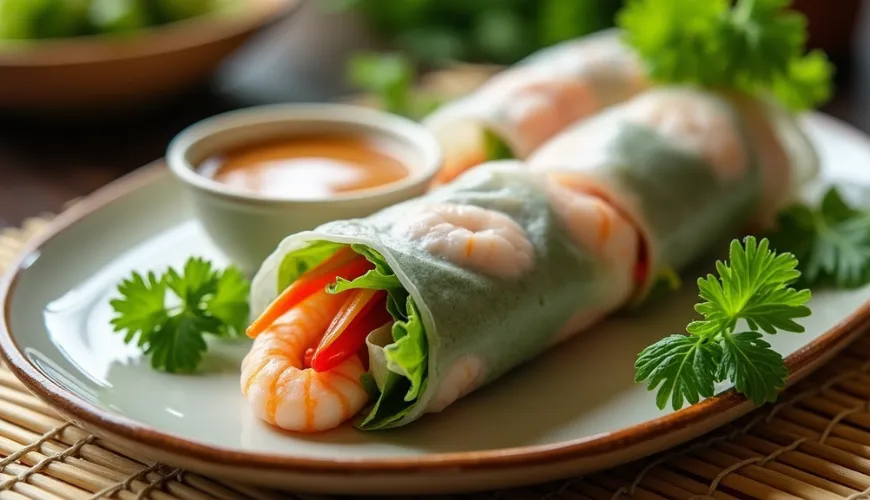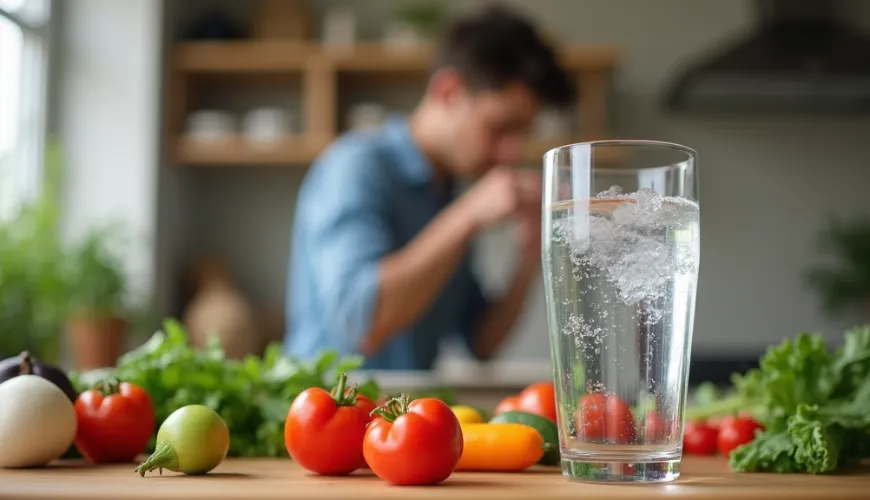
Summer rolls are an ideal light choice for hot days.

Summer rolls are one of those dishes that combine simplicity, freshness, and playfulness. Originating from Vietnamese cuisine, their popularity today extends far beyond Southeast Asia. On hot summer days, when we crave a light yet satisfying meal, fresh summer rolls are an ideal choice. They are not fried, contain plenty of vegetables, and thanks to rice paper, they are naturally gluten-free. Whether you opt for a vegetarian version or fill them with shrimp, chicken, or tofu, each time you can create a different taste experience.
Summer rolls are traditionally served with a stylish sauce – sometimes peanut, other times fish, or perhaps a spicy lime with chili. It is the sauce for summer rolls that serves as the cherry on top and often decides whether you truly enjoy the roll. In today's article, we will not only look at how to prepare the best summer rolls but also offer tips for a summer roll sauce recipe, which is as important as the filling itself.
Why are fresh summer rolls so popular?
At first glance, it's a simple dish – rice paper, fresh vegetables, herbs, protein of choice. But it is precisely this variability that makes them a beloved evergreen among healthy lifestyle advocates and those who enjoy playing with food. Summer rolls can be customized by everyone, making them excellent for dinners with friends or family celebrations. Everyone can "wrap" their roll to their liking.
A great example is a summer evening barbecue in the garden, where alongside marinated tofu and crispy vegetables, a small culinary workshop takes place – guests dip rice paper, layer slices of cucumber, carrot, fresh herbs, and pre-prepared shrimp. This results in a feast that is not only delicious but also interactive and fun.
Summer rolls with shrimp – exoticism on the plate
One of the most popular versions is undoubtedly summer rolls with shrimp. Shrimp (or prawns) add a gentle sea flavor to the otherwise vegetarian dish while remaining light and easily digestible. Whether you opt for fresh or frozen shrimp, it's important to prepare them correctly – briefly boil or sauté, season with lime juice and a pinch of salt.
For rolls, along with shrimp, thin rice noodles, finely grated carrot, red cabbage, lettuce leaves, and especially fresh herbs like cilantro, mint, or Thai basil go well. The result is not only a visually pleasing dish but also a nutritionally balanced meal full of fiber, protein, and antioxidants.
Tip: If you avoid seafood, you can replace shrimp with smoked tofu or thin slices of baked tempeh. The resulting effect will be just as delicious and 100% plant-based.
How to make summer rolls step by step
Although they look like a masterpiece, the recipe for summer rolls is surprisingly simple. The most important part is properly prepared rice paper – it only needs to be briefly soaked in lukewarm water until it softens but does not fall apart. Then it is spread on a clean cutting board, and the filling begins to be layered.
Start perhaps with a layer of fresh lettuce – you can choose romaine or maybe crispy iceberg. Add rice or mung bean noodles, depending on your preference. Thinly sliced carrot, cucumber, and bell pepper will brighten the whole thing and add a touch of flair. Don't forget to toss in fresh herbs like cilantro, mint, or basil, which will give it the right aroma. And finally, the main protein: shrimp, tofu, or even pieces of chicken – according to taste.
The roll is then carefully rolled – first folding the bottom part of the paper over the filling, then folding in the sides, and finally rolling the entire roll. The result is a flexible yet firmly wrapped package full of fresh flavors.
Sauce for summer rolls – the key flavor component
Without a good sauce, summer rolls wouldn't be what they are. The sauce for summer rolls is often what makes the difference between an average experience and a gastronomic ecstasy. There are several variants that suit the type of filling you use. Below are two of the most popular options:
Peanut Sauce
Perfect for rolls with tofu, chicken, or shrimp. It's rich, slightly sweet, and creamy.
Ingredients:
- 2 tablespoons of peanut butter (preferably 100% natural)
- 1 tablespoon of soy sauce
- 1 teaspoon of maple syrup or honey
- 1 teaspoon of rice vinegar
- Juice of half a lime
- Some water to thin
- To taste: garlic, chili, or ginger
Simply mix all the ingredients in a bowl, or briefly blend. Season according to personal preferences – some prefer it sweeter, others spicier.
Spicy Sauce with Fish Sauce
A more authentic Vietnamese flavor, perfect for shrimp and herb rolls.
Ingredients:
- 2 tablespoons of fish sauce (nam pla)
- 1 tablespoon of cane sugar
- Juice of one lime
- 1 tablespoon of water
- 1 clove of garlic (finely chopped)
- Chopped red chili pepper
This sauce is refreshing, spicy, and slightly sweet. It perfectly complements the lightness of the rolls and enhances the flavor of the herbs.
Vietnamese chef Luke Nguyen's quote captures it precisely: "The sauce is not just an addition – it's the heart of every roll."
How to serve and preserve fresh rolls
Summer rolls are best consumed immediately after preparation – only then do they retain their elasticity, crispness, and freshness. However, if you plan to prepare them in advance, it's good to wrap them in a damp cloth and store them in a cool place in a sealed container. Rice paper tends to dry out or stick, so each roll should be slightly separated.
For serving, a cutting board, ceramic plate, or bamboo tray will suffice. They also look great in sushi bowls or on slate boards, and if you really want to impress your guests, prepare several types of sauces in small bowls.
Summer rolls as a path to more sustainable eating
Besides their deliciousness and lightness, summer rolls also exemplify a more sustainable approach to eating. They use seasonal vegetables, are naturally gluten and lactose-free, and their preparation requires no cooking (except for briefly boiling shrimp or noodles). This means energy savings and a smaller ecological footprint.
Moreover, they allow you to easily limit animal components – vegetarian or vegan summer rolls are not lacking in flavor. On the contrary, fresh herbs and a well-chosen sauce create a harmony that even a staunch meat-eater will love.
With a bit of creativity, summer rolls can also be made from local ingredients – for example, with beetroot, fresh spinach, or fermented cabbage. There is no one correct recipe, but that's the beauty of them.
Summer rolls are not just food – they are a small ritual that combines freshness, color, texture, and aroma into one harmonious whole. Whether you prepare them just for yourself for a light lunch or as a main course for guests, one thing is certain – the flavors will always be different but always exceptional.

